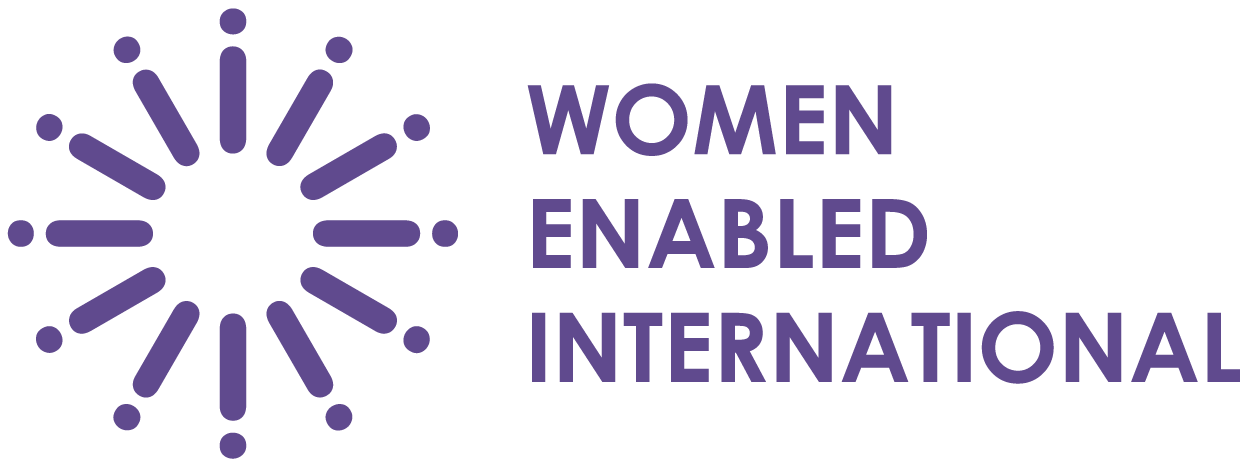Activists From Strength: What You Need to Know to Be a Disability and Gender-Inclusive Funder

In countries across the Middle East, Central Asia, and Eastern Europe, organizations led by women and gender-diverse people–with and without disabilities–are transforming traditional patterns of activism for disability rights. While these activists strive to advance rights at the intersection of gender and disability, many struggle to secure the financial resources and support necessary to sustain their work.
In an effort to spark dialogue and discussion to strengthen inclusive, intersectional, and sustainable movements for gender and disability justice, Urgent Action Fund for Feminist Activism (UAF-FA) and Women Enabled International (WEI) collaborated on a new report titled Activists From Strength: What You Need to Know to be a Disability and Gender-Inclusive Funder. The report identifies the key challenges disability rights activists experience in their work as well as recommendations for funders who are interested in supporting work at the intersection of gender and disability.
“In our society, boys… men with disabilities have certain prospects. They’re being promoted…they can access jobs. They can access employment or be self-employed. But young women and girls with disabilities remain isolated…. Basically, these girls will live in the family [home], within the four walls of their room. They don’t go out anywhere.”
– Activist from Tajikistan
After speaking with organizations led by gender-diverse people with and without disabilities across the Middle East, Central Asia, and Eastern Europe, UAF-FA and WEI, found that the funding challenges most often experienced by disability rights activists include:
1) Lack of core funding
2) Complex application processes
3) Lack of flexible funding
4) Shrinking funding opportunities due to political or conflict context
5) Limited funding for advancing disability rights
6) Funding that goes through the government and benefitting organizations that do not use a rights-based approach
7) Grantmaking strategies that are not responsive to the needs of those with disabilities
8) Difficulties identifying and connecting with funders
9) Lack of feedback on applications
With these challenges in mind, how can funders advance disability and gender rights and justice in a way that fully recognizes the leadership of women and gender-diverse people?
Our interactive report puts forth these recommendations to funders:
1) Identify and connect with organizations led by people with disabilities: Use creative approaches and take advantage of the snowball effect, where key contacts help identify additional organizations. Review civil society reports to the United Nation’s treaty bodies to identify organizations and advocates working at the intersection of gender and disability issues and learn about their work. Be flexible and ask potential grantee partners about their preferred way of communication.
2) Listen to activists: Recognize the expertise of movements, including current and potential grantee partners. Have meaningful conversations with current and potential grantee partners to understand their needs and situations better.
3) Simplify Processes for Grantees: Simplify application and grantmaking processes and make them more flexible. Adapt to changing needs. Use a wide variety of ways to transfer funds. Make sure organizations can receive cash payments. Devise safe payment routes.
4) Improve Communication: Incorporate and/or improve your accessible communication strategies. Ensure linguistic justice and accessibility in application and reporting processes. Create lines of communication between funders and organizations and people with disabilities.
5) Set Clear Priorities: Focus on supporting small organizations, with diverse leadership, human rights-focused organizations, activists and organizations in crisis situations.
6) Provide Support: Provide grantee partners’ staff with the support they need to sustain their work, including core funding. Offer support materials to help prospective grantee partners navigate application and implementation processes. Create accessible processes for feedback for rejected applications. Offer accompaniment for current and prospective grantee partners on project design and management and organizational development.
7) Adjust Criteria: Revise funding criteria to ensure organizations can apply for and access core funding. Make sure your criteria do not exclude activists from certain regions of any given country from receiving funding. Ensure your grant application criteria reflect disability justice principles without requiring organizations to identify explicitly as disability-justice organizations. This approach recognizes that many don’t subscribe to global north/funder-specific terminology and that disabilities can be invisible or not central to an organization’s mission while still being addressed by fostering inclusivity, equity, and accessibility. Use a broad definition of “emergencies” as a key criterion for accessing crisis funding.
8) Build Bridges: Build relationships between organizations and people with disabilities and funders. Encourage and provide funding for prospective and current grantee partners to engage in cross-movement collaboration at the intersection of gender and disability. Share this interactive report with other funders and join us in sparking change!
Want to learn more? Read Activists From Strength: What You Need to Know to be a Disability and Gender-Inclusive Funder in the link below.
Downloads
DOC format downloads
- No files found
PDF format downloads
- No files found
DOC format downloads
- No files found
PDF format downloads
- No files found
DOC format downloads
- No files found
PDF format downloads
- No files found
DOC format downloads
- No files found
DOC format downloads
- No files found
PDF format downloads
- No files found
DOC format downloads
- No files found
PDF format downloads
- No files found
DOC format downloads
- No files found
PDF format downloads
- No files found
DOC format downloads
- No files found
